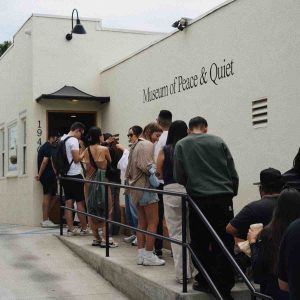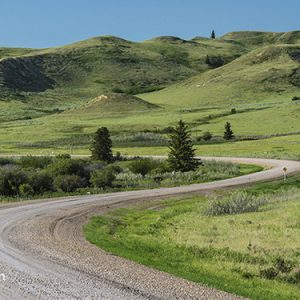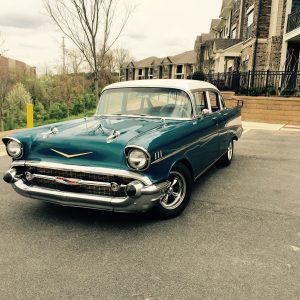
Reviving History: The Preservationists Saving Southern Landmarks on Backroads
The South. A tapestry woven with threads of charm, struggle, and enduring beauty. Beyond the bustling city centers, a quieter South exists, clinging to its heritage on winding backroads. Here, time seems to slow, whispering stories from grand plantation homes to weathered general stores. But these landmarks, often fragile with age, are facing an uphill battle against decay and neglect. Enter the preservationists – modern-day knights armed with trowels, historical records, and an unwavering passion to save these Southern treasures, one backroad landmark at a time.
This isn’t simply about bricks and mortar; it’s about preserving the very soul of the South. These buildings aren’t just pretty facades; they’re tangible links to the past, holding within their walls the echoes of generations, the joys, the sorrows, the everyday lives that shaped the region. From meticulously restoring antebellum mansions to breathing new life into abandoned schools and churches, these preservation efforts are ensuring that future generations can connect with their history in a meaningful way.
The Silent Plea of Crumbling Walls: Why Southern Landmarks Matter
Why all the fuss about old buildings? The answer resonates deeply with the need for connection and understanding. Southern landmarks, particularly those tucked away on backroads, offer a unique window into a bygone era. They speak of agricultural economies, social hierarchies, artistic expressions, and the resilience of communities in the face of adversity.
Imagine standing in the parlor of a plantation house, now painstakingly restored to its former glory. You can almost hear the rustle of silk gowns, the murmur of conversations, and the strains of piano music. Or picture yourself inside a one-room schoolhouse, envisioning the rows of children learning their ABCs by the light of a single oil lamp. These are not just abstract concepts from a history book; they are visceral experiences that bring the past to life.
But these landmarks are disappearing at an alarming rate. Economic hardship, natural disasters, and a lack of awareness are contributing to their decline. Neglect often leads to irreparable damage, erasing irreplaceable pieces of Southern history. That’s where preservationists come in.
The Unsung Heroes: Profiles in Preservation
The world of historic preservation is diverse, encompassing architects, historians, craftspeople, and passionate volunteers. Each plays a crucial role in the meticulous process of saving these Southern landmarks. They’re not just renovators; they’re detectives, researchers, and storytellers.
- The Architect as Detective: Architects specializing in preservation must be skilled researchers. They delve into historical records, architectural plans, and even old photographs to understand the original design and construction techniques. Their goal is not to impose modern styles but to restore the building as faithfully as possible to its original state.
- The Historian as Interpreter: Historians provide the context and narrative. They uncover the stories behind the buildings, the people who lived and worked there, and the events that shaped their lives. This historical research informs the restoration process, ensuring that the landmark is not just physically preserved but also interpreted accurately.
- The Craftsperson as Artist: From master carpenters skilled in traditional joinery to experienced plasterers who can recreate intricate moldings, craftspeople are the artists who bring the restoration vision to life. They possess specialized skills and knowledge passed down through generations, ensuring that the repairs and replacements are authentic and durable.
- The Volunteer as Advocate: Preservation efforts often rely on the dedication of volunteers. They organize fundraising events, conduct tours, assist with research, and advocate for the preservation of local landmarks. Their passion and commitment are essential for raising awareness and mobilizing community support.
Let’s meet some of these inspiring individuals:
- Sarah Jenkins, Restorer of the Rosewood Plantation: Sarah is a whirlwind of energy and determination. After inheriting the Rosewood Plantation, a crumbling antebellum home in rural Mississippi, she dedicated herself to its restoration. She spent years researching the history of the plantation, uncovering the stories of the families who lived there, both enslaved and free. Sarah secured grants, rallied local volunteers, and worked tirelessly with skilled craftspeople to bring Rosewood back to its former glory. Today, the plantation is a living museum, offering visitors a glimpse into the complex history of the South.
- David Miller, Champion of the Crossroads General Store: David grew up in a small town in Georgia, where the Crossroads General Store was the heart of the community. When the store closed its doors after decades of service, David saw an opportunity to preserve a vital piece of local history. He purchased the building and embarked on a meticulous restoration project, carefully preserving the original shelves, counters, and signage. The Crossroads General Store is now a thriving community hub once again, serving as a reminder of the importance of local businesses and the enduring spirit of small-town America.
The Challenges and Triumphs: A Balancing Act
Preserving Southern landmarks on backroads is not without its challenges. Funding is often scarce, and the cost of restoration can be prohibitive. Many landmarks are located in remote areas, making access difficult and increasing transportation costs. Finding skilled craftspeople familiar with traditional building techniques can also be a hurdle.
However, these challenges are often outweighed by the rewards. Seeing a dilapidated building transformed into a vibrant community center, a historical museum, or a beautifully restored home is a deeply satisfying experience. It’s a testament to the power of preservation to breathe new life into forgotten spaces and to connect future generations with their heritage.
Common Challenges & Solutions
| Challenge | Solutions |
|---|---|
| Limited Funding | Grants, local fundraising, tax incentives |
| Skilled Labor Shortage | Apprenticeships, vocational training, partnering with universities |
| Remote Location | Strategic material sourcing, volunteer efforts, community support |
| Structural Integrity | Careful planning, experienced contractors, modern engineering |
The Future of Southern Preservation: A Call to Action
The future of Southern landmarks on backroads depends on a collective effort. It requires increased awareness, greater funding, and a renewed commitment to preserving our shared heritage. Here’s how you can get involved:
- Support Local Preservation Organizations: Donate to local preservation groups, volunteer your time, or attend their events.
- Advocate for Historic Preservation: Contact your elected officials and urge them to support policies that protect historic landmarks.
- Visit and Explore Historic Sites: Take a road trip and discover the hidden gems of the South.
- Spread the Word: Share stories of preservation successes and challenges on social media.
By working together, we can ensure that the stories of the South continue to be told, one landmark at a time. The echoes of the past will resonate for generations to come, enriching our lives and connecting us to the rich and complex history of this extraordinary region.

Additional Information
Reviving History: Beyond Preservation, a Deep Dive into the Cultural and Economic Revival Through Southern Landmark Preservation
The act of preserving historic landmarks in the American South extends far beyond mere aesthetic appreciation. It represents a crucial intersection of cultural identity, economic development, and social justice, each intricately woven into the fabric of the region. While the original article likely highlighted the surface-level efforts of preservationists, a deeper examination reveals a complex ecosystem dedicated to not only saving physical structures, but also breathing new life into communities and addressing historical inequalities.
The Economic Engine of Preservation:
Preservation initiatives aren’t simply about maintaining relics of the past; they’re increasingly recognized as potent economic drivers. Rehabilitating historic buildings often attracts tourism, creates jobs in skilled trades, and revitalizes local economies.
- Tourism Impact: Heritage tourism is a significant industry in the South. For example, Charleston, South Carolina, heavily leverages its historic architecture to attract millions of tourists annually. A study by the National Trust for Historic Preservation found that historic preservation generates more jobs per dollar invested than new construction. The economic impact of preservation extends beyond direct tourist spending to include support for local businesses, restaurants, and hotels.
- Job Creation & Skills Development: Preservation projects require specialized skills in carpentry, masonry, plastering, and other traditional trades. Investing in preservation initiatives therefore stimulates the development of these skills, providing employment opportunities and fostering a skilled workforce capable of maintaining and restoring historic structures. Organizations like the Preservation Trades Network are crucial in training the next generation of preservationists.
- Real Estate Value Appreciation: Studies consistently show that properties in historic districts tend to appreciate in value more rapidly than those in non-historic areas. The designation of a historic district, while requiring adherence to preservation guidelines, can significantly enhance property values and attract investment. This can lead to a revitalization of blighted areas and an increase in tax revenue for local governments.
The Cultural Significance and Intangible Heritage:
The South’s historic landmarks hold a particularly nuanced and sometimes fraught cultural significance. Preservation efforts must acknowledge and engage with the complex history embedded within these sites, including the legacy of slavery, segregation, and racial injustice.
- Interpreting Difficult Histories: Many historic sites in the South are directly associated with slavery or the Jim Crow era. A growing trend in preservation is to actively interpret these difficult histories, acknowledging the suffering and resilience of enslaved people and marginalized communities. For example, Montpelier, James Madison’s plantation, has incorporated extensive archaeological research and oral histories to reveal the lives of the enslaved people who lived and worked on the property. This kind of honest and inclusive interpretation is crucial for fostering reconciliation and understanding.
- Preserving African American Heritage: Historically, preservation efforts have often focused on preserving the homes and properties of the elite, neglecting the built environment of African American communities. Organizations like the National Trust for Historic Preservation’s African American Cultural Heritage Action Fund are working to address this imbalance by providing funding and support for the preservation of historically Black colleges and universities, churches, and other important sites. Saving these sites is crucial for preserving the cultural identity and collective memory of African American communities.
- Protecting Intangible Heritage: Preservation extends beyond physical structures to encompass intangible cultural heritage – the traditions, practices, and knowledge associated with historic sites. This includes preserving traditional crafts, music, and culinary traditions. For example, the preservation of a Gullah Geechee sweetgrass basket-making tradition requires not only preserving the physical materials but also ensuring that the knowledge and skills are passed down to future generations.
The Social Justice Dimension of Preservation:
Preservation can be a powerful tool for promoting social justice and addressing historical inequalities. However, it’s crucial to ensure that preservation efforts benefit all members of the community, particularly those who have been historically marginalized.
- Preventing Displacement and Gentrification: Revitalizing historic neighborhoods can inadvertently lead to gentrification and displacement of long-time residents. It is essential to implement policies that protect affordable housing, provide support for low-income residents, and ensure that preservation efforts benefit the entire community. Strategies include community land trusts, rent control, and inclusionary zoning.
- Empowering Local Communities: Preservation projects should be driven by the needs and priorities of local communities. This requires engaging residents in the planning process, providing opportunities for them to participate in preservation activities, and ensuring that the benefits of preservation are shared equitably.
- Using Preservation as a Tool for Reconciliation: As mentioned before, interpreting difficult histories and acknowledging past injustices is crucial for fostering reconciliation. By engaging with the past in an honest and meaningful way, preservation can help to heal divisions and build a more equitable future.
Case Studies:
- The Sweet Auburn Historic District, Atlanta, Georgia: This district, once the vibrant center of African American business and culture, faced decline in the mid-20th century. Preservation efforts, including the restoration of the Martin Luther King Jr. National Historical Park and the revitalization of historic buildings, have helped to revitalize the area, attract tourism, and celebrate the legacy of the Civil Rights Movement.
- The Cane River Creole National Historical Park, Louisiana: This park preserves the cultural landscape of the Cane River region, including the historic plantations and Creole communities that shaped the area. The park’s interpretive programs explore the complex history of race, slavery, and cultural exchange in the region.
- The Reconstruction Era National Historical Park, South Carolina: Established in 2017, this park preserves sites related to the Reconstruction era, a period of significant political and social change following the Civil War. The park’s exhibits and programs examine the challenges and opportunities of Reconstruction, including the struggle for voting rights, the rise of Black political leaders, and the backlash against racial equality.
Challenges and Future Directions:
Despite its potential, preservation faces significant challenges in the South. Funding is often limited, particularly for projects in rural areas and underserved communities. Climate change poses a growing threat to historic structures, requiring innovative approaches to preservation and adaptation. Furthermore, ensuring that preservation efforts are equitable and inclusive requires ongoing dialogue and collaboration with diverse stakeholders.
The future of preservation in the South lies in embracing a holistic approach that integrates cultural, economic, and social justice considerations. By acknowledging the complexities of the past, engaging with local communities, and investing in sustainable preservation practices, we can ensure that the South’s historic landmarks continue to inspire, educate, and revitalize for generations to come.






